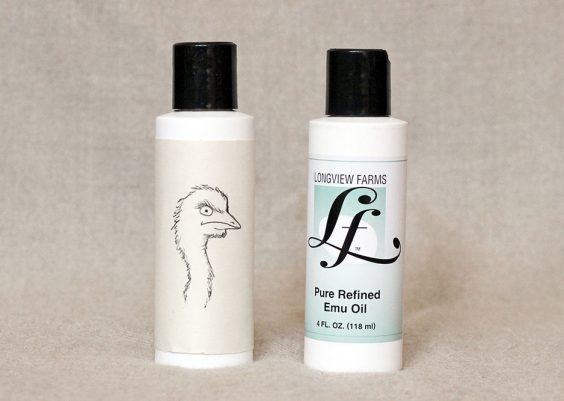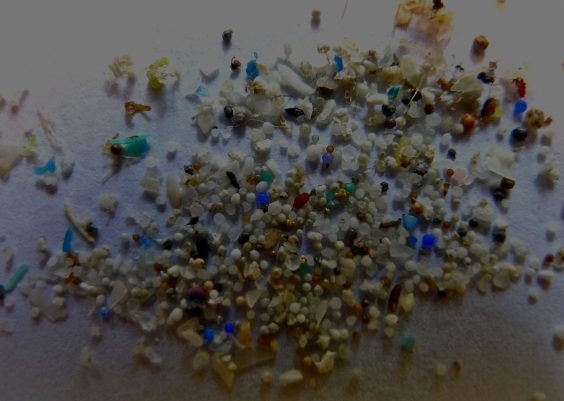Winter comes with some obvious perks, like cold-weather sports, cozy sweaters, and an extra excuse to cuddle inside. But it also has some serious downsides, like dry, cracked skin that can make you feel like the Crypt Keeper’s younger but similarly dehydrated sister.
At least you’re not alone: “Almost every patient I see in the wintertime suffers from [dry, cracked skin] at some point,” Gary Goldenberg, M.D., assistant clinical professor of dermatology at the Icahn School of Medicine at Mount Sinai in New York City, tells SELF. The lack of moisture in the environment dries out your skin, he explains, and when you head inside and blast the heat, that can make it even worse.
You’re also probably washing your hands a lot to try to fend off colds, the flu, and other nasty bugs that seem everywhere during the winter, and that can strip your skin’s moisture even more, New York City dermatologist Doris Day, M.D., author of Beyond Beautiful, tells SELF.
This uphill battle to keep your skin moisturized can lead to serious dryness, peeling, and cracking. And this isn’t just an aesthetic concern; any breaks in your skin can serve as portals for bacteria or viruses, potentially making it easier for you to get an infection, Dr. Day says. Here’s what you can do.
1. First things first: Treat the cracks.
If you notice a crack in your skin, you should address it to avoid infection. Dr. Bailey recommends first washing your hands, rinsing the crack with water and washing around it with soap, then applying an antibiotic cream. Since this is likely just a small break in your skin, you don’t need to bandage it, but of course you can if you want to. You do, however, need to keep an eye out for signs of infection that warrant a visit to your doctor, like redness, pain that’s getting worse, warmth, and swelling.
You should also figure out how to prevent this kind of dryness and cracking in the future. Luckily, there are a few solid techniques you can use.
2. Switch to a body moisturizer that has oil within the first five ingredients.
In general, lotions tend to be water-based while creams are typically oil-based, says the Mayo Clinic. (To be 100 percent certain, though, research any product you’re considering buying to find out what it contains.) In the winter, you may want to switch to heavier moisturizers that contain oil since it traps moisture in the skin better than water does, Dr. Day says, adding that you should look for oil to be one of the first five ingredients to make sure it’s a major part of the product’s formula. (Be wary of using anything oilier than usual on your face if you’re prone to acne, though.)
Dr. Day also recommends looking for products with humectants like propylene glycol, lactic acid, and hyaluronic acid—they help pull and hold water in your skin.
3. Moisturize immediately after you shower or wash your hands.
The Mayo Clinic suggests juuust barely drying your skin, then applying moisturizer. This helps trap water in the surface cells of your skin better than applying moisturizer once you’re completely dry.
4. Then slather on some more right before bed.
This is a good way to ensure your skin will get a solid dose of moisture that won’t be interrupted much until the A.M., Dr. Goldenberg says. You’ll want to target your driest areas, and it’s also not a bad idea to put breathable cotton socks or gloves over your feet and hands after you lube up. This helps to keep your moisturizer close to your skin while you sleep rather than rubbing off on your sheets, Dr. Day says.
5. Use gloves when doing your dishes to feel both fancy and moisturized.
You’re likely already bundling up in gloves, mufflers, or a scarf to protect your hands, cheeks, and lips when you go outside. But it’s also a good idea to wear rubber gloves when you wash dishes at home since harsh soaps and solvents in your dish soap can strip away your skin’s natural moisture, Cynthia Bailey, M.D., F.A.A.D., president and CEO of Advanced Skin Care and Dermatology, Inc and founder of DrBaileySkinCare.com, tells SELF. “I recommend getting in the habit of protecting skin every day to prevent chapping from even starting,” she says.
6. Avoid detergents and soaps that have fragrance, alcohol, or dyes.
It’s not just about your dish soap. If dry skin is an issue for you, Dr. Bailey suggests steering clear of all cleansing products that contain fragrance, alcohol, dyes, and perfumes, because these can irritate and dry out your skin. Instead, choose gentle, fragrance-free soaps (even better if they have added oils and fats to boost moisture), and unscented (or at least less scented) detergents.
7. Use a humidifier in your bedroom.
Using a humidifier helps replace some of the lost moisture in the air. This is especially important at night, since a lot of moisture can evaporate from your skin during the hours you spend sleeping, Dr. Day says. If you don’t have a humidifier handy, you can also place a soaking wet towel in a bowl in front of your heating vent, Dr. Goldenberg says. It’s not the same thing, but it’ll release some moisture into the air all the same, he says.
8. Think of super hot showers as a special treat, not an everyday necessity.
Regularly showering up in temperatures that err on the side of scalding will dehydrate your skin by removing important oils, Dr. Bailey says. This effect just gets compounded if you hop out of the shower into your heated home, don’t apply moisturizer right away, and so on. Try taking a warm vs. super hot shower instead—it can make a big difference.
9. Opt for clothes with fibers like cotton instead of wool.
Harsh fabrics like wool can irritate your skin, Dr. Bailey says. Instead, go for fabrics like cotton or silk, which let your skin breathe. Obviously you’re not going to face the outside chill with an armor that’s pure cotton, so Dr. Day suggests making sure these gentler fabrics are the ones closest to your skin, then layering warmer materials like wool on top.
10. Stay properly hydrated.
“You have to hydrate on the inside, too,” Dr. Day says, explaining that when you’re not hydrated enough, your body prioritizes sending fluids to important organs like your heart and lungs rather than your skin.
While everyone’s hydration needs vary, the Mayo Clinic recommends women get 11.5 cups of fluids per day (this counts water, other beverages, and any liquids that come from food). Here’s more information about how much water you should drink each day for optimal health.
11. And know when to bring in a professional.
If your skin is dry no matter how much you baby it, or if it’s constantly peeling or cracking, don’t just ignore it. “It can become medically important if you don’t deal with it properly,” Dr. Day says. Sometimes persistent dryness is a sign of a health condition like psoriasis, eczema, or contact dermatitis in response to a substance that irritates your skin or causes an allergic reaction. In any case, it’s definitely a reason to see your doctor to create the most moisturizing action plan possible.
Related:





